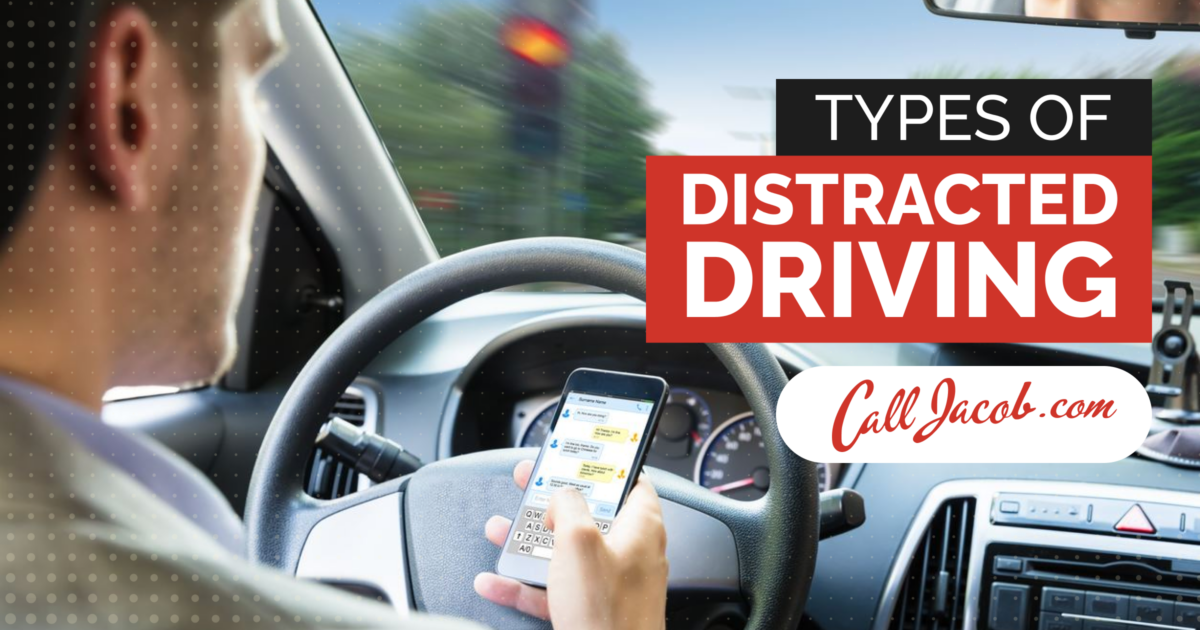In 2020, 3,142 people were killed and over 324,000 injured in vehicular crashes involving distracted drivers, according to the National Highway Traffic Safety Administration (NHTSA). Not all of them were vehicle occupants. Numerous pedestrians, bicyclists, and others were killed or injured due to distracted drivers.
There are three primary types of distraction that can impair driving. These categories include:
Manual Distraction
The driver takes one or both hands off the wheel to perform a task, making them unable to steer the vehicle. As a result, their reaction time is diminished. They also risk losing control or veering off the road or into traffic.
Common manual distractions include:
- Driving and Eating: You might not think chewing and swallowing are distracting, but opening packaging, unwrapping food items, reaching and leaning, wiping crumbs and smudges, spilling drinks, and dropping things are.
- Turning Dials and Knobs: Whether surfing radio stations, adjusting the AC or seat settings, or accessing the internet, email, or text messages, you could be severely distracted from driving.
- Reaching: Other distractions include helping a child with a car seat, assisting a passenger with a seat belt, going through personal belongings, or reaching for or applying makeup/cosmetic products.
Visual Distraction
When a driver’s eyes focus on something other than the road, their awareness of surroundings and ability to assess conditions or hazards is impaired. Therefore, they’re unable to ensure the safety of themselves and others.
Examples of dangerous visual distractions include:
- Texting While Driving: If you’re looking at your phone and texting, that’s a double whammy. Your eyes are off the road and your hands are not in control of the wheel.
- Looking Out the Window: Peering outside to see an accident, a vehicle pulled over by police, a billboard, construction work, street names/addresses, or scenery is distracted driving.
- Setting the GPS: Looking at the navigation system, or attempting to set it while on the road, is distracting. Set your destination before driving and turn on voice navigation.
Cognitive Distraction
While they don’t involve taking one’s hands off the wheel or looking away, cognitive distractions do prevent a driver from concentrating on important tasks. Their attentiveness, awareness, and reaction time therefore decrease.
Actions that take cognitive functions away from operating a car include:
- Hands-Free Calling: While your hands are on the wheel, talking on the phone in any capacity draws your attention to the conversation, not the road.
- Talking to Passengers: Even without looking at passengers in the car with you, talking, laughing, or arguing are distractions. Any conversations should be kept brief.
- Daydreaming: Zoning out or letting your mind wander takes your focus off the road. Even becoming emotional, including angry, sad, or confused, can distract you from important tasks.
Other Distractions to Avoid
In the modern age, it’s much too tempting to multitask. But think of it this way—driving already occupies you with different tasks. You should never comb your hair, shave, read a newspaper or book, smoke, type on a laptop, write notes, or make a business call when behind the wheel.
Safe driving requires your mind and body to focus. It’s critical to pay attention and always expect the unexpected. Therefore, you can make decisions and react to anything that happens. It will keep you, and others, safe and alive.
Have You Been in a Distracted Driving Accident? Call Jacob Today
No matter the cause of a car accident, taking on the insurance companies yourself won’t get the compensation you deserve. The Law Offices of Jacob Emrani will file your claim and fight to win. Having won millions of dollars in damages, we provide high-quality legal representation to victims injured by distracted drivers in all areas we serve in California. Call (888) 952-2952 for your free consultation.



